Luxor Attractions
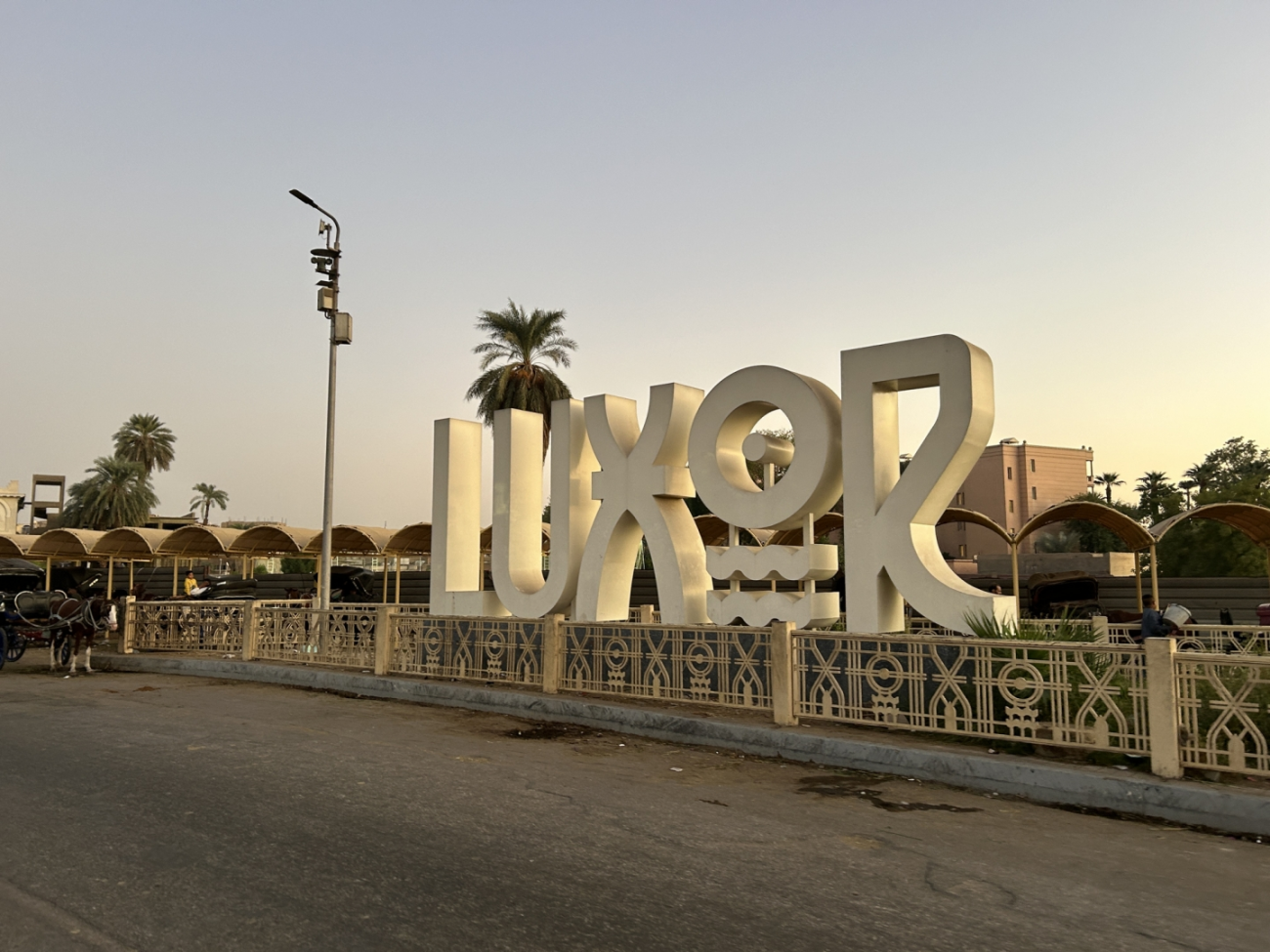
Luxor, formerly ancient Thebes, was Egypt’s capital from 1570 to 1069 BCE and peaked between 1353–1336 BCE as the world’s largest city with 80,000 residents. Divided by the Nile, the East Bank hosts Karnak Temple, Egypt’s second-largest religious site, while the West Bank contains the Valley of the Kings with over 60 royal tombs. Visitors can also see the Colossi of Memnon and Queen Hatshepsut’s limestone temple. Hot air balloon rides at sunrise offer panoramic views, showcasing Luxor’s enduring historical and cultural significance.
Explore the East Bank: Iconic Luxor Attractions
The East Bank of Luxor holds some of Egypt's most important archeological treasures. This lively part of the city is a great starting point to experience the grandeur of ancient Egyptian civilization.
Karnak Temple: A vast open-air museum
Karnak Temple, the world’s second-largest religious site, showcases ancient Egyptian architectural skill and devotion. The Open Air Museum displays reconstructed monuments, including the White Chapel of Senusret I, Amenhotep II’s calcite shrine, and Hatshepsut’s Red Chapel. The Hypostyle Hall features 134 towering pillars over 75 feet high, while the Sacred Lake offers panoramic views and houses Amenhotep III’s Sacred Scarab, highlighting the temple’s historical and religious significance.
Luxor Temple at night: A magical experience
Luxor Temple, originally built by Amenhotep III and later expanded by Ramses II, becomes enchanting after sunset. Spotlights illuminate colossal statues and obelisks, casting dramatic shadows and bringing ancient stories to life. The softly glowing Avenue of Sphinxes guides visitors along the pharaohs’ ceremonial path. Nighttime visits offer a peaceful atmosphere, perfect for imagining ancient rituals, with entry around USD 10.
Luxor Museum and Mummification Museum
Luxor Museum, opened in 1975, showcases a carefully curated collection spanning the Old Kingdom to the Mamluk period, emphasizing quality over quantity. Highlights include treasures from Tutankhamun’s tomb, such as shabti figures, model boats, sandals, and gilded bronze rosettes. A 2004 wing displays royal mummies, including Ahmose I and possibly Ramses I, alongside the reconstructed Wall of Akhenaten with rare Aten temple decorations. Nearby, the Mummification Museum (opened 1997) exhibits embalming tools, oils, and salts, plus well-preserved human and animal mummies, illustrating the blend of science, spirituality, and artistry in ancient Egyptian mummification practices.
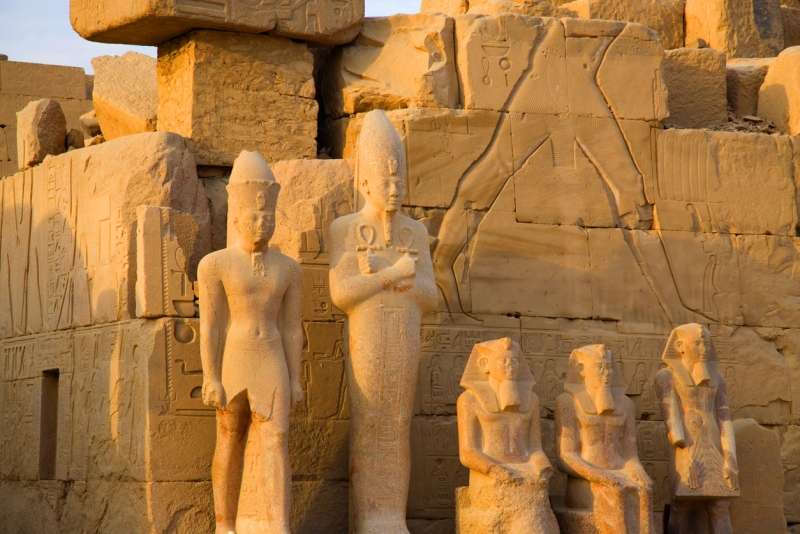
Generally, 2-3 full days are recommended to comfortably see the major sites without rushing. This allows for one day dedicated to the East Bank and one or two days for the West Bank.
Discover the West Bank: Ancient Tombs and Temples
The West Bank of Luxor holds a rich collection of royal tombs and mortuary temples. Visitors can learn about ancient Egyptian beliefs surrounding death and afterlife in this sacred necropolis. This "City of the Dead" stretches across nine square kilometers and contains thousands of tombs, dozens of temples, and countless shrines.
Valley of the Kings: Where pharaohs rest
The Valley of the Kings served as the royal burial site for Egypt’s New Kingdom pharaohs from the 18th to 20th Dynasties (c. 1539–1075 BC), chosen for its hidden location to protect tombs from looters. The valley contains at least 63 tombs, beginning with Thutmose I and ending with Ramesses X or XI, each featuring sloping corridors, halls, and burial chambers adorned with religious texts and imagery for the afterlife. Visitors can access 8–10 tombs on rotation to preserve the artwork, with regular tickets covering three tombs; Tutankhamun’s tomb (KV62), discovered largely intact by Howard Carter in 1922 with over 5,000 treasures, requires a special ticket.
Hatshepsut's Temple: A queen's legacy
Hatshepsut’s mortuary temple at Deir el-Bahari is a terraced architectural masterpiece inspired by the nearby Temple of Mentuhotep II. Built between her seventh and twentieth regnal years, it features three terraces connected by ramps, with the middle terrace showcasing reliefs of her Punt expedition and divine birth, reinforcing her authority as a female pharaoh. This terrace also contains shrines to Hathor and Anubis, with a central sanctuary for the barque of Amun-Re. Restoration work began in the 1960s, and the temple opened to the public in March 2023.
Colossi of Memnon: Sunrise photo spot
The Colossi of Memnon are two massive statues of Pharaoh Amenhotep III, standing over 18 meters (59 ft) tall and guarding the site of his mostly vanished mortuary temple. Named during the Greco-Roman period after the legendary Ethiopian king Memnon, the northern statue famously "sang" at sunrise following a 27 BC earthquake, a phenomenon caused by dew evaporating from the stone. These 3,400-year-old monuments remain popular with photographers, especially at sunrise against the Theban Necropolis backdrop.
Medinet Habu and the Ramesseum
Ramesses III’s mortuary temple at Medinet Habu spans 7,000 m² (1.7 acres) with 48 rooms adorned with detailed reliefs depicting his military victories, particularly over the Libyans and Sea Peoples. Excavations at Ramesses II’s Ramesseum have uncovered tombs, storage areas for olive oil and honey, workshops, kitchens, and the "House of Life," a temple-based scientific school. Together, these sites illuminate both religious rituals and everyday life in ancient Egypt.
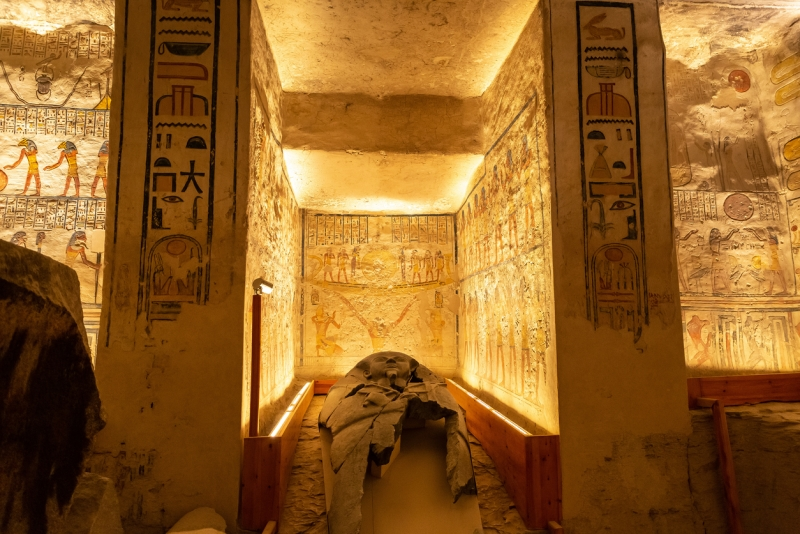
Hidden Gems in Luxor Worth Visiting
Luxor holds treasures that spread far beyond its famous monuments. Curious travelers who venture off the tourist trail will find hidden gems that reveal fascinating glimpses into ancient Egyptian life.
Deir el-Medina: The village of artisans
This ancient village stands remarkably preserved today and tells the story of skilled craftsmen who created the royal tombs in the Valley of the Kings. The village, known as "Set maat" ('Place of Truth'), flourished from 1550–1080 BCE during the New Kingdom period. About 68 houses spread across 5,600 square meters with a narrow road running through the settlement. Excavations that started in 1922 have made this site a rich source of information about community life in the ancient world. These middle-class artisans lived surprisingly privileged lives. They worked eight days and rested for two, plus enjoyed numerous festivals that gave them free time for over one-third of the year.
Tombs of the Nobles: Colorful and overlooked
Between the Ramesseum and Hatshepsut's Temple lie these tombs that provide a refreshing alternative to royal burial sites. Unlike the Valley of the Kings, you'll find realistic scenes of daily Egyptian life here instead of religious imagery. The walls tell authentic stories of ancient lifestyle, agriculture, and social customs. Their simple design makes them more available to explore - usually an entrance leads to a small room or two before reaching the burial chamber. These tombs see nowhere near the crowds of their royal counterparts.
Howard Carter House: Step into history
Howard Carter lived in this modest one-story building at the time he found Tutankhamun's tomb in 1922. A restoration completed in November 2022 brings Carter's living environment back to life. Several rooms are now furnished with care, including Carter's study and a photographic darkroom. Visitors can walk around a replica of Tutankhamun's sarcophagus - something the actual tomb site doesn't allow. While most items are period reproductions, the house holds one genuine treasure: a foundation brick that Lord Carnarvon gave to Carter.
Esna Temple: Restored colors and quiet charm
The Roman-era Esna Temple stands 60 kilometers south of Luxor. Since 2018, restoration work has brought remarkable changes. Local people's fires inside the temple vestibule had blackened its colorful decorations over centuries. The cleaning has revealed bold yellow and red pigments that dominate the temple - quite different from the white and blue colors common in other Egyptian temples. The restoration team has found new details in the clothing, crowns, and thrones of depicted deities and kings. The most impressive find shows Khnoum's holy barque carried by priests during processions.
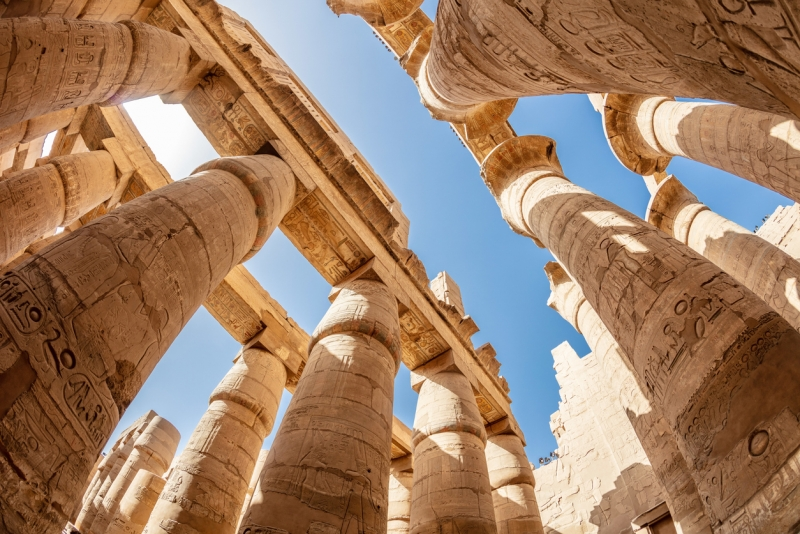
Customize Your Dream Vacation!
Get in touch with our local experts for an unforgettable journey.
Plan Your Trip
Unforgettable Experiences Beyond the Ruins
Luxor's magic extends far beyond its archeological treasures. Visitors should discover the city's vibrant culture and stunning landscapes through various activities.
Hot air balloon ride over the West Bank
Dawn breaks spectacularly as you float above Luxor's ancient landscape. This 45-60 minute aerial adventure starts with a 4 AM pickup and gives exceptional views of the Valley of Kings, Hatshepsut's Temple, and nearby monuments. The experience costs between $55-85 and comes with hotel transfers and refreshments. Most travelers call this flight their most cherished Egyptian memory.
Sunset felucca ride on the Nile
Traditional wooden sailboats with triangular sails have sailed the Nile for thousands of years. These peaceful two-hour trips rely on wind power and let you witness the golden sunset over Luxor's skyline. Some tours take you to Banana Island with its plantations and small zoo. Felucca rides start at £10 and give you a peaceful break from busy temples.
Shopping at Luxor's local bazaars
Colorful markets near Luxor Temple showcase special finds - alabaster statues, papyrus artworks, spices, perfumes, and Egyptian cotton clothing. Bargaining is expected for valuable items, though paying full price for small trinkets shows respect to local vendors.
Trying traditional Egyptian food
Egyptian cuisine delights with authentic dishes like koshary (Egypt's national dish), ta'ameya (fava bean falafel), and ful mudammas. Sofra restaurant serves traditional meals and offers cooking classes at 300 EGP/£8 where guests learn authentic Egyptian recipes.
Planning Your Visit to Luxor
A great trip to Luxor needs smart planning that makes your visit comfortable and enjoyable. The right timing and accommodation choices will make your Egyptian archeological adventure much better.
Best time to visit Luxor Egypt
The sweet spots to visit Luxor are March-April and October-November. These months bring pleasant temperatures, fewer tourists, and better hotel rates. Visitors can enjoy comfortable sightseeing with temperatures between the low 50s and mid-90s Fahrenheit during these shoulder seasons.
Winter months from December to February are the coolest. Temperatures stay between the low 40s and upper 70s. This peak tourist season brings higher prices. Make sure to book your flights and hotels months ahead during winter.
Summer hits hard from May through September. Daytime temperatures soar into the 100s, making outdoor activities tough. Budget travelers who can handle the heat will find the cheapest hotel rates during this time.
How to get to Luxor and move around
Tour busses take you to major sites without the hassle of bargaining. They come with knowledgeable guides and cost between USD 65-175 per tour. Bikes are a cheaper option. Hotels and local shops rent them for 5-20 Egyptian pounds (USD 0.50-2.00).
Taxi rides need upfront price agreements. Most trips cost between 5-150 Egyptian pounds (USD 0.50-17.00) based on your bargaining skills. Public ferries cross the Nile for about 1 Egyptian pound each way. They wait to fill up before leaving.
Flights from Cairo reach Luxor in 1-2 hours with several daily options. Trains take longer at 9-12 hours but are cheaper, costing USD 25-35.
Where to stay: East Bank vs. West Bank
The East Bank bustles with activity. It has better amenities, comfy hotels, and luxury international chains near Luxor and Karnak Temples. You'll find plenty of restaurants, shops, and transport options here.
The West Bank gives you peace and quiet closer to the Valley of the Kings and Hatshepsut's Temple. This area feels more authentic with its cozy guesthouses and boutique stays.
New visitors often pick the East Bank for its convenience. Those wanting a quieter stay head to the West Bank. Many guests split time between both areas to get different views of the city.
Do you need a guide in Luxor?
Hotel-arranged private guides charge 500-800 EGP daily. They give personal attention and flexible schedules. Group tours cost less at 300-500 EGP per person but follow fixed times.
Going solo saves money but misses out on rich historical context. Guides help you understand complex temple layouts and spot important details you might miss.
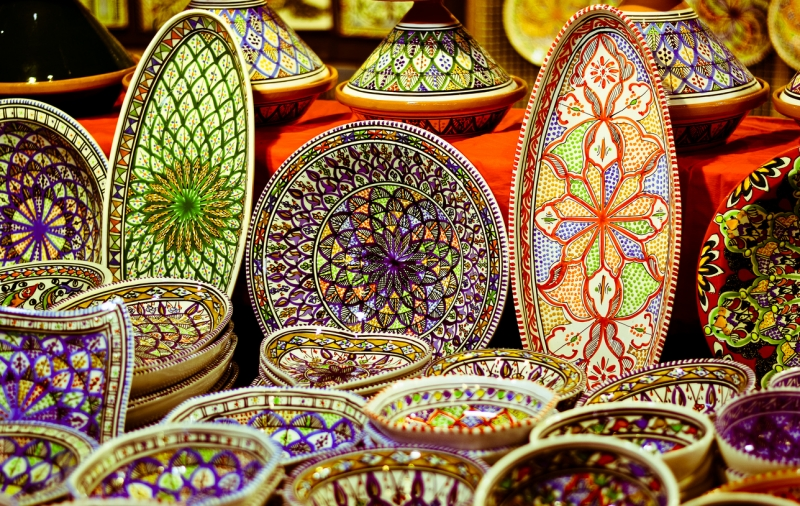
When I explored Luxor beyond the usual highlights, I discovered treasures like Medinet Habu, Ramses III’s stunning mortuary temple, the Temple of Khonsu at Karnak, and the beautifully decorated Tomb of Ramose in the Valley of the Nobles. The Tomb of Sennedjem in Deir el-Medina was another favorite, offering a peaceful and authentic glimpse into daily life in ancient Egypt—away from the big tourist crowds.
Absolutely! During my stay in Luxor, I found that both the Luxor Museum and the Mummification Museum are often overlooked by travelers. The Luxor Museum showcases a carefully curated collection of artifacts with breathtaking Nile views, while the Mummification Museum gives you a fascinating look into how ancient Egyptians perfected the art of embalming.
If you want to feel the real Luxor, don’t just stop at the big monuments. Explore Old Qurna Village, an abandoned settlement full of history, or wander through the local souq, where you’ll meet friendly vendors and shop for spices, handicrafts, and souvenirs. These experiences will connect you to the everyday life of Egyptians, giving you memories no guidebook can capture.
Yes, and I highly recommend them! The Tomb of Ramose in the Valley of the Nobles is a masterpiece showing the artistic transition between traditional and Amarna styles. The Tomb of Sennedjem in Deir el-Medina feels intimate and beautifully preserved, giving you insight into the workers who built the great royal tombs. Both sites are far less crowded, so you can truly soak in the atmosphere.
To experience Luxor like a local, step off the beaten path. Spend time in the souq, explore hidden tombs and smaller temples, and visit places like Old Qurna. For deeper insight, hire a local guide in Luxor—they know the city’s hidden corners and can share stories you won’t find in travel books. This way, you’ll feel the heartbeat of Luxor beyond the famous attractions.
Absolutely! Hot air balloon rides over Luxor are incredibly popular and offer breathtaking panoramic views of the Nile, temples, and valleys at sunrise. They typically depart from the West Bank.











